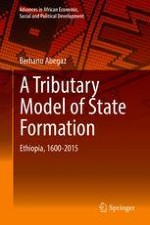2018 | OriginalPaper | Buchkapitel
4. The Shewan Fiscal-Territorial State
verfasst von : Berhanu Abegaz
Erschienen in: A Tributary Model of State Formation
Aktivieren Sie unsere intelligente Suche, um passende Fachinhalte oder Patente zu finden.
Wählen Sie Textabschnitte aus um mit Künstlicher Intelligenz passenden Patente zu finden. powered by
Markieren Sie Textabschnitte, um KI-gestützt weitere passende Inhalte zu finden. powered by
